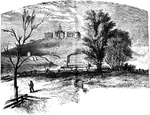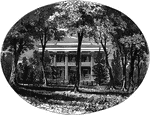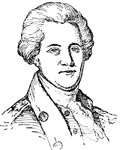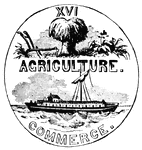Tennessee
The Tennessee ClipArt gallery includes 14 illustrations from the Volunteer State.

20 Star United States Flag, 1818
Color illustration of a 20 Star United States flag. The additional stars represent the states of Indiana,…

20 Star United States Flag, 1818
Black line illustration of a 20 Star United States flag. The additional stars represent the states of…

John D. C. Atkins
(1825-1908) Served as a member of the US House of Representatives and the Confederate Congress from…
Basin of Middle Tennessee
Different physiografic provinces make up the Basin of Middle Tennessee. Sections from east to west across…
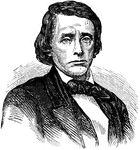
William Gannaway Brownlow
William Gannaway Brownlow was Governor of Tennessee from 1865 to 1869 and a Senator from Tennessee from…
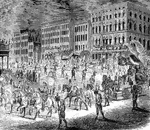
Memphis Cotton Carnival
An illustration of Memphis, Tennessee's Cotton Carnival, which consisted of a series of parties and…

Chattanooga, Tennessee in 1862
Chattanooga, "the Scenic City", is the fourth-largest city in Tennessee (after Memphis, Nashville, and…

Cumberland Gap
"Cumberland Gap and Heights, Tenn., from the Kentucky side. Cumberland Gap was a place of such importance…

Bombardment of Fort Henry
"Bombardment of Fort Henry, Tennessee River, Tenn., by the Mississippi Flotilla, Flag Officer Foote,…
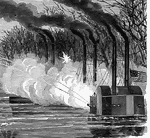
Bombardment of Fort Henry
"Bombardment of Fort Henry, Tennessee River, Tenn., by the Mississippi Flotilla, Flag Officer Foote,…

Bombardment of Fort Henry
"Bombardment of Fort Henry, Tennessee River, Tenn., by the Mississippi Flotilla, Flag Officer Foote,…
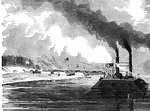
Bombardment of Fort Henry
"Bombardment of Fort Henry, Tennessee River, Tenn., by the Mississippi Flotilla, Flag Officer Foote,…

Battlefield of Franklin
The Second Battle of Franklin (more popularly known simply as The Battle of Franklin) was fought at…

Hooker's Battle
"The war in Tennessee. Hooker's Battle above the clouds, and capture of the Confederate position on…

Island Number Ten
Island Number Ten was a former island in the Mississippi River near Tiptonville, Tennessee and the site…

Bombardment of Island Number Ten
Island Number Ten was a former island in the Mississippi River near Tiptonville, Tennessee and the site…

Andrew Jackson
An illustration of a sculpture of Andrew Jackson located in Memphis, Tennessee's city park.

Battle of Murfreesboro
The Battle of Stones River or Second Battle of Murfreesboro (in the South, simply the Battle of Murfreesboro),…
Nashville Dome
Section of the Nashvile dome, showing the center eroded into a topographic basin or encircled lowland,…

Battle of Fort Pillow
Battle of Fort Pillow is also known as the Fort Pillow Massacre, fought on April 12, 1864 on the Mississippi…

Pittsburg Landing in Tennessee
Pittsburg Landing is a town in Hardin County, Tennessee and is named for the industrial heritage of…

Battle of Pittsburg Landing
Recapture of artillery by the First Ohio and other regiments under General Rousseau, April 7, 1862.…

James Polk
The eleventh President of the United States, serving from March 4, 1845 to March 3, 1849. Polk was born…
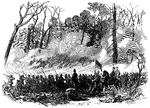
Battle of Shiloh
"Battle of Shiloh, or Pittsburg Landing, left wing- the woods on fire during the engagement of Sunday,…
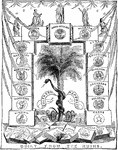
Southern Republic Built from the Ruins
A political cartoon of the Southern states being built from the ruins after the Civil War.
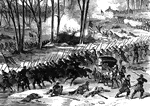
Battle of Stone River
"Battle of Stone River, Tenn. The decisive charge of General Negley's division across the river- the…

Battle of Stone River
"Battle of Stone River, Tenn. The decisive charge of General Negley's division across the river- the…
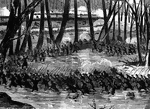
Battle of Stone River
"Battle of Stone River, Tenn. The decisive charge of General Negley's division across the river- the…
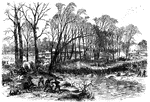
Battle of Stone River
"Battle of Stone River, Tenn. The decisive charge of General Negley's division across the river- the…

Battle of Stone River
"Battle of Stone River, Tenn. Decisive charge and capture of Byrne's Confederate battery by the Seventy-eighth…

Battle of Stones River Scene
Scene in the afternoon at the Battle of Stones River, also known as the Second Battle of Murfreesboro…

Battle of Stones River
The Battle of Stones River, also known as the Second Battle of Murfreesboro was fought from December…

Seal of Tennessee
The Great Seal of the State of Tennessee. The seal shows images such as wheat and a plow to represent…
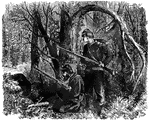
War in Tennessee
"The war in Tennessee. Federal pickets approached by Confederates in cedar bushes near Chattanooga.…
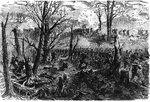
War in Tennessee
"The war in Tennessee. Capture of Mission Ridge, near Rossville, by General Thomas, November 25th, 1863.…

War in Tennessee
"The war in Tennessee- Lookout Mountain and its vicinity, from the position of the Eleventh Army Corps."—…

War in Tennessee
"The war in Tennessee- Confederate massacre of Federal troops after the surrender at Fort Pillow, April…
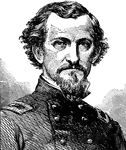
Felix Kirk Zollicoffer
Felix Kirk Zollicoffer (May 19, 1812 – January 19, 1862) was a newspaperman, three-term United States…
